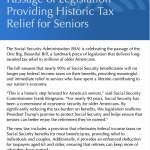That’s the claim of this article in Inside Higher Ed, from last Thursday (yeah, I’d been meaning to write about this for a couple days):
State funding for public higher education has increased in the five years since the recession. However, those increases are not keeping pace with inflation. Just two states — Utah and Massachusetts — have had operating-fund support for public higher education that matched or surpassed the rate of inflation in each of those five years, according to a new report from the University of Alabama’s Education Policy Center. Five states failed to hit the inflation rate a single time.
But here’s the catch: the article is not speaking of “inflation” as the general reader would expect them to mean, the Consumer Price Index. No, they’re measuring state spending on higher education against the Higher Education Price Index. And what, you ask, is the Higher Education Price Index? It is a measure produced by Commonfund, an institutional asset management company specializing in nonprofits, such as university endowment funds.
See the description here; the key paragraph:
HEPI is a more accurate indicator of changes in costs for colleges and universities than the more familiar Consumer Price Index. It measures the average relative level of prices in a fixed basket of goods and services purchased by colleges and universities each year through current fund educational and general expenditures, excluding research.
What does this mean, exactly? It’s not the same thing as a measure of the overall increase in higher education spending. It attempts to identify the impact solely of inflation, not university spending decisions that raise or lower costs. This means that the installation of a lazy river or a climbing wall doesn’t factor in, nor does the decision to replace a retired tenured professor with an adjunct professor, nor the decision to reduce the teaching load for existing tenure-track professors. Productivity gains due to technology, such as automation in administrative tasks, are also not reflected in the index. In addition, the impact of student body size, or of staffing levels (e.g., the increases in administrators and support staff) are also excluded.
So what does the index reflect? Salaries, mostly. Which means it’s not really an “inflation” index so much as a measure of wage growth. According to the 2015 report (which I can’t link to, but is downloadable from the prior link), here’s the breakdown:
Faculty salaries, 35%
Admin salaries, 11%
Clerical, 18%
Service employees, 8%
Fringe benefits, 13%
Utilities, 7%
Supplies and material, 6%
Misc services, 2%
Now, it surprised me that this index is so heavily weighted towards salaries, but I suppose the key here may be that these are “operating expenses” and perhaps not just building construction but also major but routine maintenance projects are also classified seprately. Perhaps this also excludes room and board as falling under a separate budget? In any case, the report stipulates that “research” expenses are also excluded. But we’re told that the need to constantly keep technology up-to-date, e.g., in computer labs, is partly to blame for growth in tuition, but this seems to be a small sliver only, if this falls under “supplies and material.”
But in any case, this index is still circular: after all, it is the universities themselves which are making the decisions about what level of pay increase to grant their employees or what level of fringe benefits to provide, then turning around and using this data to say that this “proves” that they need more money. Now, one might argue that, given that high degree to which operating budgets are tilted towards salaries, it would be more appropriate, on an apples-to-apples basis, to compare university spending changes to the wage index rather than the CPI, but the very reason why wages are expected, in general, to rise ahead of inflation is because of productivity increases, and I suspect there’s a lot more that can be done before universities can say they’ve exhausted their ability to increase productivity, especially given that faculty salaries account for a mere 35% of budget.













